Time Spent at the Falls
ktuli — Fri, 10/01/2010 - 18:58
Ok - hopefully I can keep my promise from my last post and provide something a bit more appealing today.
Not too long ago, I took a trip up to McConnell's Mill State Park. I really love going to this park, but honestly, I get mixed results with my photography there - I never know whether I'll come back with stuff I like, or a whole card worth of images to delete.
This trip, as I was driving there, I thought about what kind of photography I would like to do that day. Sometimes this works out and I manage to get exactly what I wanted, but more often than not I miss the mark altogether. Most days, I try to head out with no plan whatsoever and just capture whatever I can find. Both ways work, and I flip back and forth between them.
As I cruised up I79, listening to Lotus, I thought perhaps I should delve into HDR. And with that in mind, I decided to take multiple exposures of any shots I did.
Here's one set of results... (if you hover your mouse over one of the thumbnails, it will change the larger image, then you can slide along the row of thumbnails to see the progression in exposure - if it is the first time through, be patient as sometimes my server is a little slow and the image might take a moment to load).
Technical Data: Canon EOS 7D, Sigma 10-20mm f/4-5.6 EX DC HSM AF at 16mm, 1.3, 2, 3.2, 5.2, 8, 12, 21 sec respectively at f/28.1. ISO 200. Dolica AX620B100 tripod. No post production. McConnell's Mill State Park, Lawrence County, PA.
So for the most part, a lot of those images don't really work by themselves, but the hope is that I can eventually run these through some HDR processing and get a super image out of them.
If you're unfamiliar, HDR works by taking a set of differently exposed images and merging them into a single image with a much greater detail by including a high dynamic range of sensitivity from the darkest to lightest details. Our eyes naturally can see a much wider range in sensitivity to light than our cameras can, so using a post production process like this is the way around that limitation.
I'll be honest, I've never done any HDR work before, so hopefully this works and then I'll eventually share the final product here.
Thanks for stopping by, leave a comment and let me know what you think of these photos or any experience you have with HDR.
- Bill

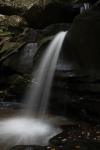
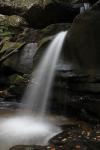

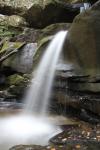
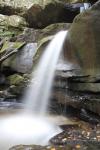
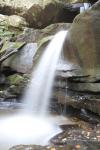


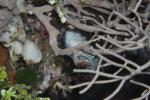


Bill...Nice job with an easy way to see how the exposure times dramatically change the image. I also like that the camera is mounted on a tripod and you're shooting the *exact* same picture. What would be even nicer would be to put the exposure times right below the images. This would give everyone an idea on how much more light the sensor picked up in any given amount of time. I know, I know. More work for you, but I guess it's better than asking you to put together a movie which cycles through the images automatically. :)
Post new comment